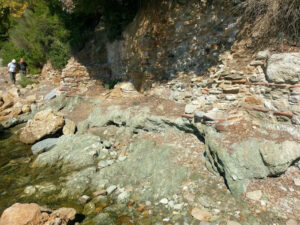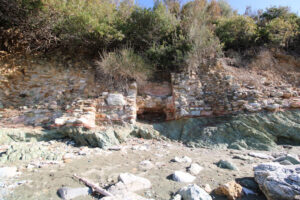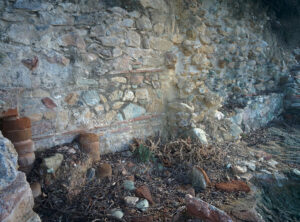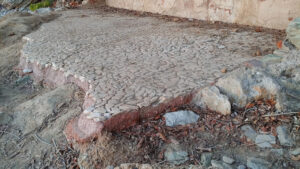Skopelos Ancient Selinus, Skopelos Roman Bath, Skopelos Selinounda, Greek Archeological Museums, Skopelos ancient towns, History of Skopelos, Ancient Selinus in Skopelos, Skopelos Island Loutraki, Skopelos Loutraki, Greek Ancient History, Skopelos Culture, Skopelos the greenest Island, Skopelos Mamma Mia Island, information, summer on Skopelos island, Skopelos summer destination, Skopelos travel guide, traveling to Skopelos, Skopelos best island in the world, visit Skopelos, Skopelos getaway, Skopelos international distinction, vacation in Skopelos, holidays in northern sporades, Northern Sporades, Greece, Greek Islands, greek gem destinations, Skopelos blog, Skopelos Blogspot, Skopelos blogging, Skopelos blogs, Skopelos bloggers
Rediscovering Ancient Selinus: Unraveling the Roman Baths in Skopelos Island, Sporades
Amidst the azure waters of the Aegean Sea lies the enchanting island of Skopelos, a true gem in the Sporades archipelago. Beyond its picturesque landscapes and charming villages, Skopelos cradles a piece of history within its embrace. Here, the ruins of Ancient Selinus and the remnants of Roman baths softly whisper tales of eras long past.

Selinus, an ancient city also referred to as Selinous, was one of the trio of historic settlements situated on Peparethos Island. The Roman Baths were constructed southeast of Glossa in the area known as “Katakalou.” The Roman Baths in the sea at Katakalou were unearthed by G. Dionysiou. Their significance in the region’s social life is evidenced by the enduring name “ Loutraki,” which persists in collective memory to this day.
This site exemplifies the public architecture of its era. Dating back to the late 3rd century AD, the Roman thermal baths reflect the Roman view that such facilities were not only for personal hygiene but also served as venues for socializing, walking, exercising, and integrating into city life.
The only preserved sections of the ancient city today are the remnants of the southeast walls and an ancient building, both dating back to the 5th-4th century BC.
The Magnificence of Roman Baths
During the Roman period, Selinus experienced notable growth and prosperity. This era saw the construction of architectural wonders, including the famous Roman baths, which exemplified the sophistication and luxury typical of Roman cities. The present-day name of the settlement, Loutraki, underscores the baths’ significant role in the community’s social life. These baths were not only venues for personal cleanliness but also spaces for exchanging ideas, meditating, strolling, exercising, and other social activities. They were central to the social fabric of the city.

Roman Bath Orientation
The baths are oriented to the northwest, with a visible length of 42 meters and a width ranging from 0.5 to 4.5 meters, excluding the portions now submerged by the sea. From west to east, seven sections remain unexcavated. In Section 1, the floor is covered with a mosaic made of opus caementicium. Section 4 features remnants of a low-burning structure with round earthen supports (pilae), above which lie flooring tiles (suspensuae). Section 5 shows evidence of low burning and is likely the praefurnium; it is also possible that this section contains the common reservoir (alvus) of the Baths.
Parts of Selinounda in Greek Archeological Museums
Archaeological remnants from Selinounta include parts of the south-east walls from the 5th to 4th centuries BC and ruins of ancient buildings from the same period. Additionally, artifacts such as engraved tombstones, small marble statues, Hellenistic and Roman inscriptions, and graves have been uncovered in the area.

In 1865, a marble statue of the goddess Athena, a replica of the Athena Parthenos by the renowned sculptor Pheidias, was discovered in the area. This statue is now housed in the National Archaeological Museum of Athens. At the same time, many additional relics from this location are housed and preserved in the Archaeological Museum of Volos. Today, the only remaining part of the baths is the mosaic floor, half-submerged in the sea.
Ancient Selinounta
The Roman baths in Selinus were not just bathing places; they were sophisticated complexes built to support a variety of social, cultural, and leisure activities. These baths were crucial to Roman society, functioning as communal areas where people gathered to clean themselves, socialize, and participate in intellectual and physical endeavors. Carefully constructed, the Selinus baths showcased Roman engineering excellence. Decorated with marble columns, detailed mosaics, and intricate frescoes, these luxurious establishments demonstrated the wealth and sophistication of the city’s upper class.

Conclusion
Skopelos.com – Skopelos Blog
Blog.Skopelos.com – Skopelos.com/Blog
Author – Adrina Hotels Skopelos – www. Adrina.gr
www.AdrinaBeach.com – www.AdrinaResort.com
